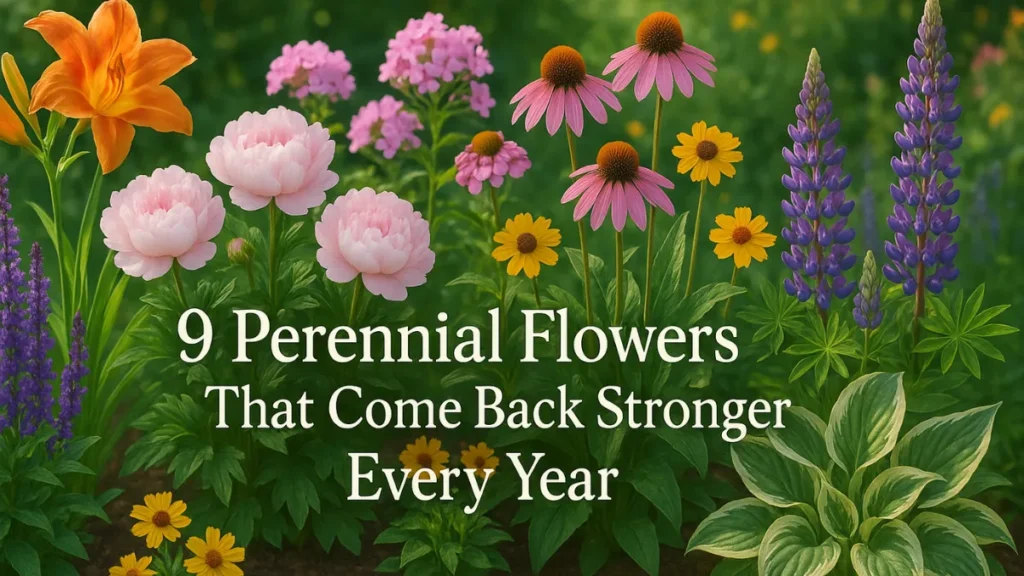Looking to grow fresh, healthy plants but don’t have much garden space? Container gardening might be your perfect solution. In fact, some plants actually thrive better in pots than in traditional garden beds. Whether you’re short on outdoor space, dealing with poor soil conditions, or simply want more control over your garden’s environment, growing in containers can offer better drainage, fewer pests, and greater flexibility.
From herbs and strawberries to cucumbers and lettuce, many popular edibles grow faster, healthier, and more productively in pots. Plus, container gardening allows you to move your plants around to optimize sunlight and shelter them from harsh weather.
In this blog, we’ll explore 9 plants that grow better in containers than in the ground, along with tips to help them thrive. Whether you’re a beginner or an experienced gardener, this guide will help you make the most of your space and enjoy a bountiful harvest.
1. Herbs
Herbs are among the easiest and most rewarding plants to grow in containers. Most herbs, such as basil, thyme, mint, parsley, chives, and oregano, thrive in small spaces and can be grown on balconies, patios, or even windowsills.
Container gardening allows for better control over soil quality and drainage, which are essential for the health of these delicate plants. Herbs typically prefer well-drained soil and full sun, both of which are easier to provide in a container environment.
Additionally, growing herbs in pots helps prevent them from spreading uncontrollably—as in the case of mint, which can quickly overrun a garden bed if planted directly in the ground. Containers also make it convenient to bring herbs indoors during colder months, extending their growing season and keeping your kitchen stocked with fresh, flavorful ingredients year-round.
2. Strawberries
Strawberries are perfectly suited for container gardening. In fact, they often produce more abundant and healthier fruit when grown in pots, hanging baskets, or strawberry towers than in the ground. One major advantage of growing strawberries in containers is that it helps reduce their exposure to pests, slugs, and soil-borne diseases.
The elevation also allows for better air circulation, which helps keep the plants dry and reduces the chances of mold and mildew forming on the fruit. Containers warm up faster than garden beds in the spring, encouraging earlier growth and fruiting.
With good-quality potting mix, adequate watering, and six to eight hours of sun per day, strawberries will thrive. Regular feeding with a balanced liquid fertilizer and removing runners will further boost fruit production and keep the plants healthy.
3. Peppers
Peppers—both sweet and hot varieties—flourish in containers when provided with proper care. They are heat-loving plants that benefit from the warmer soil found in pots, which often leads to faster growth and earlier yields compared to garden-planted peppers.
Containers also give you the advantage of mobility, allowing you to move plants to sunnier spots or indoors during sudden cold snaps. Pepper plants need consistent watering and well-drained, nutrient-rich soil, which are more easily managed in a container setup.
Additionally, growing peppers in pots can reduce issues with soil-borne diseases and nematodes. Stake or cage the plants early to support their growth, and use a large enough container—at least 3–5 gallons per plant—for best results. With the right conditions, you can enjoy a colorful and spicy harvest right from your patio or balcony.
4. Lettuce
Lettuce is an ideal plant for container gardening, particularly because it has a shallow root system and grows quickly. Whether you’re growing leaf, butterhead, romaine, or iceberg varieties, lettuce does well in wide, shallow containers with good drainage.
One key advantage is the ability to control temperature and sunlight more easily than in open ground. Lettuce prefers cooler temperatures, and with containers, you can move the plants to shadier spots during warm weather to prevent bolting. Frequent watering is essential, as container soil dries out faster, but overwatering should be avoided.
By sowing seeds every couple of weeks, you can ensure a continuous harvest. Container-grown lettuce is also less prone to slug and snail damage, providing cleaner and more visually appealing leaves for your salads and sandwiches.
5. Eggplant
Eggplants, with their large, glossy fruits and beautiful purple flowers, are a striking addition to container gardens. They grow very well in pots, especially when placed in sunny areas that receive at least 6–8 hours of light daily. Like peppers, eggplants benefit from the warm soil found in containers, which promotes early growth and fruit development.
It’s crucial to use a large container—at least 5 gallons—to accommodate their extensive root system. Container gardening helps prevent soil-borne diseases and makes it easier to manage pests like flea beetles, which are common with ground-planted eggplants.
Fertilize regularly with a balanced or slightly phosphorus-heavy fertilizer to encourage blooming and fruiting. With proper care, container-grown eggplants can produce a steady supply of delicious fruits perfect for grilling, roasting, or making into dishes like baba ganoush.
6. Carrots
Carrots grow exceptionally well in deep containers with loose, well-draining soil, which is often difficult to find in traditional garden beds where compact or rocky soil can hinder root development. Containers allow for precise control over the soil texture, helping ensure the carrots grow long, straight, and free of deformities.
Choose deep pots or grow bags, especially for standard varieties, and make sure the soil is free of stones and clumps. Regular, consistent watering is important, as uneven moisture can cause splitting. Thinning seedlings is also easier in containers, allowing you to maintain proper spacing and encourage healthy growth.
Container-grown carrots can be harvested progressively, and because they are grown above ground level, they’re less susceptible to pests like carrot flies. With good care, you’ll be rewarded with sweet, crunchy carrots right at your fingertips.
7. Radishes
Radishes are among the fastest-growing vegetables and are well-suited to container gardening. They require minimal space and can mature in as little as 20 to 30 days, making them ideal for beginners or those looking for a quick harvest.
Containers provide the perfect environment for the loose, well-drained soil radishes need to form plump, round roots. Additionally, growing radishes in pots reduces the risk of root maggots and other soil-dwelling pests. Choose a wide, shallow container, and sow seeds at least an inch apart for best results.
Keep the soil moist but not waterlogged, and provide consistent sun exposure. Because radishes grow so quickly, you can plant successive crops throughout the growing season. Their crisp texture and spicy flavor make them a favorite for salads, garnishes, and pickling.
8. Spinach
Spinach is a cool-season green that grows exceptionally well in containers, especially during spring and fall. The plant has shallow roots, so it doesn’t require deep pots, but it does need well-draining soil and frequent watering.
Container gardening gives you the flexibility to move spinach into shaded areas when temperatures rise, helping prevent premature bolting and extending the harvest period. Spinach thrives in partial sun and can tolerate cooler weather better than many other leafy greens.
Growing it in containers also makes it easier to keep the soil nutrient-rich and free from weeds, which can otherwise compete for resources. Harvest the outer leaves regularly to encourage new growth, and use a nitrogen-rich fertilizer to support lush foliage. With good care, you’ll have a continual supply of nutrient-packed spinach for cooking and salads.
9. Cucumbers
Cucumbers adapt surprisingly well to container gardening, especially bush or compact varieties. They prefer warm temperatures and need plenty of sunlight—at least 6 hours per day—for optimal fruit production. One key advantage of container-grown cucumbers is better airflow and drainage, which helps prevent powdery mildew and other fungal issues common in ground plantings.
Use a large container, preferably 5 gallons or more, and install a trellis or cage to support vertical growth, saving space and keeping the fruit clean. Cucumbers are heavy feeders, so regular fertilization is necessary, especially once the plant begins to flower and set fruit.
Water consistently to avoid bitterness in the fruit. With proper care, container-grown cucumbers can produce a generous harvest, perfect for fresh eating or pickling.
Bottom Line
Container gardening isn’t just a space-saving option—it’s often the best way to grow healthier, more productive plants. Many vegetables and herbs benefit from the controlled environment of a pot, including better soil, drainage, and protection from pests.
Whether you’re growing crunchy carrots or fragrant basil, these nine plants prove that bigger gardens aren’t always better. With the right containers, sunlight, and watering routine, you can enjoy fresh produce right on your patio, balcony, or windowsill. So grab a few pots, good soil, and your favorite seeds—it’s time to let your container garden flourish.
FAQs
Why do some plants grow better in containers than in the ground?
Because containers offer better soil control, drainage, and protection from pests and diseases.
What size pots are best for vegetables like peppers and eggplant?
Use containers at least 3–5 gallons in size for peppers and 5 gallons or more for eggplants.
Can I grow container plants indoors?
Yes, many container plants like herbs, lettuce, and spinach grow well indoors with enough sunlight or grow lights.
How often should I water container plants?
Container plants usually need more frequent watering than ground plants—often once a day during hot weather.



